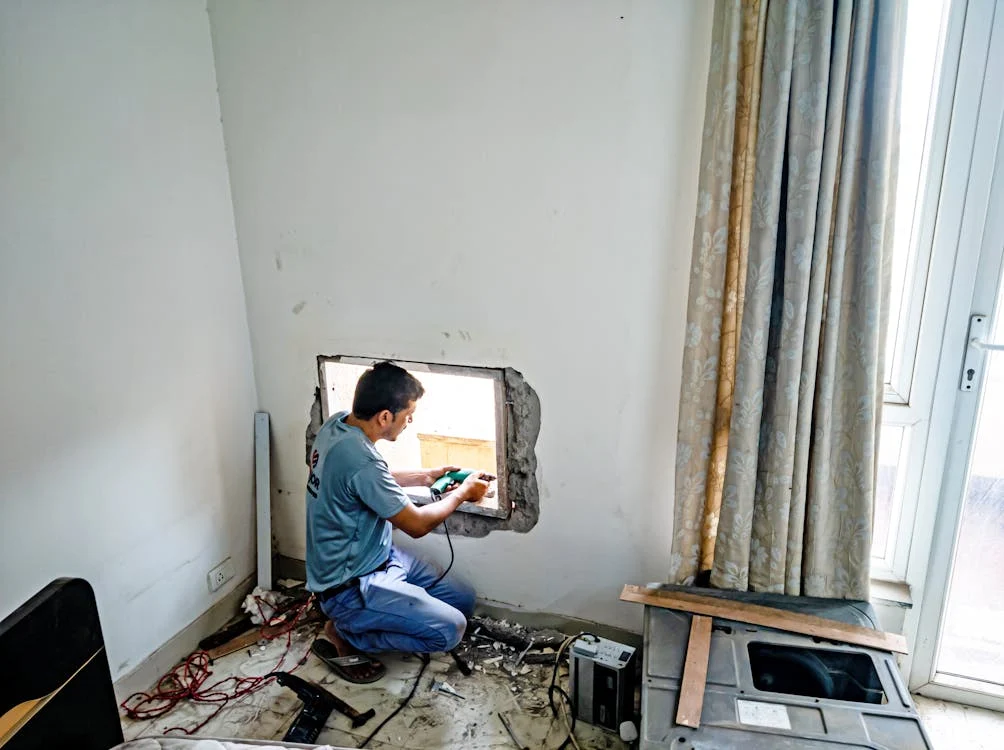Installing windows on your own can seem like a daunting task, but with the right tools and techniques, it’s entirely possible to achieve professional-level results. Whether you’re looking to replace old windows to improve energy efficiency or simply want to refresh your home’s aesthetic, DIY window installation is a rewarding project that can save you money.
In this post, we’ll walk you through eight essential tips to help you install windows like a pro, ensuring a snug fit and long-lasting performance. From preparing your workspace to sealing the edges correctly, these straightforward steps will give you the confidence to tackle the job and enjoy the satisfaction of a job well done. Ready to get started? Let’s dive in.
Prepare Your Workspace for a Smooth Installation Process
Before you begin installing windows, ensuring your workspace is organized and safe is crucial. Clear the area around the window frame and cover the floor with a protective tarp to prevent debris from damaging your flooring. You’ll also want to check that the weather conditions are appropriate for installation, as it’s best to avoid rainy or windy days.
Gather all necessary tools, including a level, drill, tape measure, and caulk gun. Having everything you need within reach helps streamline the process. This preparation also includes verifying the window’s size and condition, ensuring there’s no damage before starting the installation.
Read Expert Guides for Proper Window Installation Techniques
Installing a window might seem simple, but there’s more to it than meets the eye. It’s important to familiarize yourself with expert advice and guides that outline proper installation techniques. For instance, you need to understand window rough openings and how to measure and align the window frame accurately. Guides from experienced professionals will provide step-by-step instructions on sealing the window properly and maintaining its structural integrity over time.
This research ensures you’re not overlooking any important details, such as air sealing or flashing, which can affect your window’s performance.
Measure and Double-Check Your Window Openings
Accurate measurements are essential for a successful window installation. Start by measuring the rough opening where the window will fit, ensuring the dimensions are precise. Use a tape measure to check both the height and width of the opening, measuring from the inside edges of the frame.
It’s crucial to take multiple measurements at different points to account for any irregularities in the wall. Double-check these measurements to avoid issues when fitting the new window, as even small discrepancies can lead to a poor fit or improper sealing. Ensuring the opening is the right size guarantees a smooth installation process.
Choose the Right Window for Your Home and Needs
Selecting the appropriate window style for your space can significantly impact the success of your installation. Consider the design, material, and energy efficiency of the window to ensure it meets your needs. Common types of windows include single-hung, double-hung, sliding, and casement windows, each suited for different areas of the home.
Take the time to research and understand your options based on factors such as climate, maintenance, and insulation properties. Choosing energy-efficient windows can also save you money in the long term by improving the insulation of your home.
Remove the Old Window Carefully to Avoid Damage
When replacing an existing window, it’s essential to remove the old one carefully. Begin by removing any trim, screws, or nails securing the window in place. Use a utility knife to cut through any caulking around the edges. Take extra caution when handling the window to avoid damaging surrounding drywall or trim.
If the window is stuck, gently tap with a hammer to loosen it. Once the window is free, inspect the surrounding area for any damage to the frame. You’ll need to repair any issues before installing the new window to ensure a secure fit and proper sealing.
Install the Window Frame Level and Plumb for a Proper Fit
Achieving a level and plumb window frame is essential to the overall performance of your window. When placing the window into the rough opening, use a level to check both the horizontal and vertical alignment. If the frame isn’t level or square, it can result in improper sealing, making the window prone to leaks and drafts.
Adjust the frame as needed by adding shims behind the frame to hold it in place. Ensure all sides of the window frame are equally spaced from the rough opening, creating a balanced and secure installation.
Properly Seal and Insulate Around the Window Frame
Proper sealing and insulation are vital for a window’s energy efficiency. Once the window is positioned correctly, fill any gaps around the frame with insulation to prevent air leakage. Use expanding foam or fiberglass insulation to fill spaces between the frame and rough opening. Apply caulk to seal any joints or edges between the window frame and wall.
This prevents drafts, moisture infiltration, and heat loss, making your window more energy-efficient. Pay special attention to corners and edges, as these areas are often prone to air gaps and water damage.
Finish with Trim and Clean-Up for a Professional Look
Once your window is securely in place and sealed, it’s time to finish the installation with trim. Install interior trim around the window frame to cover any gaps and give the window a finished, professional look. Use nails or screws to secure the trim, ensuring it aligns neatly with the window.
Afterward, clean the window and surrounding area to remove dust, debris, and excess sealant. Take a step back and check your work—this final touch ensures the window looks neat and functions properly. Regularly maintain the window by checking for leaks and resealing as necessary to keep it in top condition.

Installing windows without a professional may seem challenging, but with the right tools, measurements, and attention to detail, it’s a rewarding DIY project. By preparing your workspace, carefully selecting the right window, and ensuring proper sealing and insulation, you can achieve a secure, energy-efficient installation. Although it requires patience and precision, the satisfaction of completing the project yourself and saving money is well worth the effort. With these tips in mind, you’re ready to tackle your window installation with confidence and enjoy the long-lasting benefits of your work.
By following these practical tips, you can confidently tackle your window installation project and enhance your home’s efficiency and aesthetics. For more home improvement guides and inspiration, visit HomeDecorToday.


